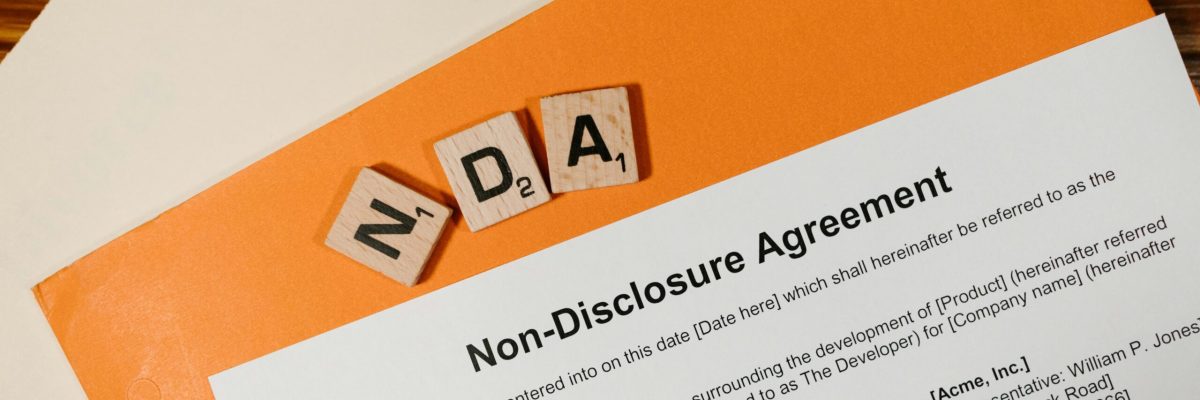Form and Structure of Confidentiality Agreements: Essentials for Business Protection
Legal Disclaimer: This blog post is for informational purposes only and does not constitute legal advice. For specific legal concerns, consult a licensed attorney. Brought to you by Cantrell Law Firm.
Introduction
Confidentiality agreements, also known as nondisclosure agreements (NDAs), are crucial legal tools that help protect sensitive information exchanged during business transactions and partnerships. Whether negotiating with vendors, clients, or collaborators, having a clearly defined and properly structured confidentiality agreement is essential to safeguarding proprietary data and managing risk.
When Are Confidentiality Agreements Used?
These agreements are often implemented in a variety of commercial contexts, including:
- Hiring consultants and advisors
- Outsourcing services or software development
- Exploring joint ventures or co-marketing partnerships
- Conducting preliminary negotiations for mergers or investments
Why Use a Written Agreement?
Although some businesses rely on verbal commitments or informal understandings, a written confidentiality agreement offers numerous advantages:
- Clearly defines what is considered confidential
- Establishes legal recourse in case of breach
- Documents both parties’ obligations and expectations
- Protects trade secrets and sensitive information
- Fulfills requirements in other contracts or industry standards
Structure and Timing
Confidentiality agreements can be stand-alone contracts or embedded within broader agreements. The best practice is to finalize and sign the agreement early in the business relationship—ideally before any confidential information is exchanged.
In certain situations, confidentiality clauses are included in documents such as letters of intent or term sheets. However, using a separate, comprehensive NDA often provides better clarity and enforceability.
Types of Confidentiality Agreements
1. Unilateral Agreements
Used when only one party is sharing confidential information. Common in consultant engagements, vendor quotes, and internal audits. These agreements place the burden of confidentiality on the recipient.
2. Mutual Agreements
Used when both parties are expected to share confidential data, such as during joint ventures, partnerships, or service contracts. Both parties agree to protect each other’s information under identical terms.
3. Reciprocal Agreements
Similar to mutual agreements but with different levels of obligation depending on the volume, type, or value of data each party discloses. This format offers flexibility when the exchange of confidential data is imbalanced.
Limitations and Practical Risks
- Irreversible Disclosures: Once confidential information enters the public domain, it cannot be “undisclosed.”
- Difficult Enforcement: Proving a breach can be complex and may require costly litigation.
- Potential Misuse: A party may comply technically with the NDA but use insights gained to develop competing strategies.
Despite these risks, confidentiality agreements provide a valuable deterrent and legal basis to assert rights if misappropriation occurs.
Integration With Broader Agreements
Confidentiality provisions often appear in larger contracts. It is important to:
- Ensure consistency between standalone NDAs and embedded clauses
- Clarify whether the NDA survives, merges with, or is superseded by future contracts
- Reference earlier confidentiality commitments in definitive agreements or proposals
Best Practices
- Customize the structure and terms for the specific transaction
- Sign the agreement before any sensitive data is shared
- Clarify each party’s responsibilities and disclosure rights
- Limit the agreement’s term to a practical timeframe while ensuring necessary protection
- Use a standalone NDA for early-stage discussions or exploratory negotiations
Conclusion
The form and structure of a confidentiality agreement can significantly affect its effectiveness and enforceability. Businesses should take care to tailor NDAs to their specific relationships and information-sharing needs. By using properly structured, timely, and relevant agreements, companies can foster trust and collaboration while protecting their most valuable data assets.
Disclaimer: This article is intended for general informational purposes only and should not be construed as legal advice. For personalized legal counsel, please consult a licensed attorney. Brought to you by Cantrell Law Firm.





